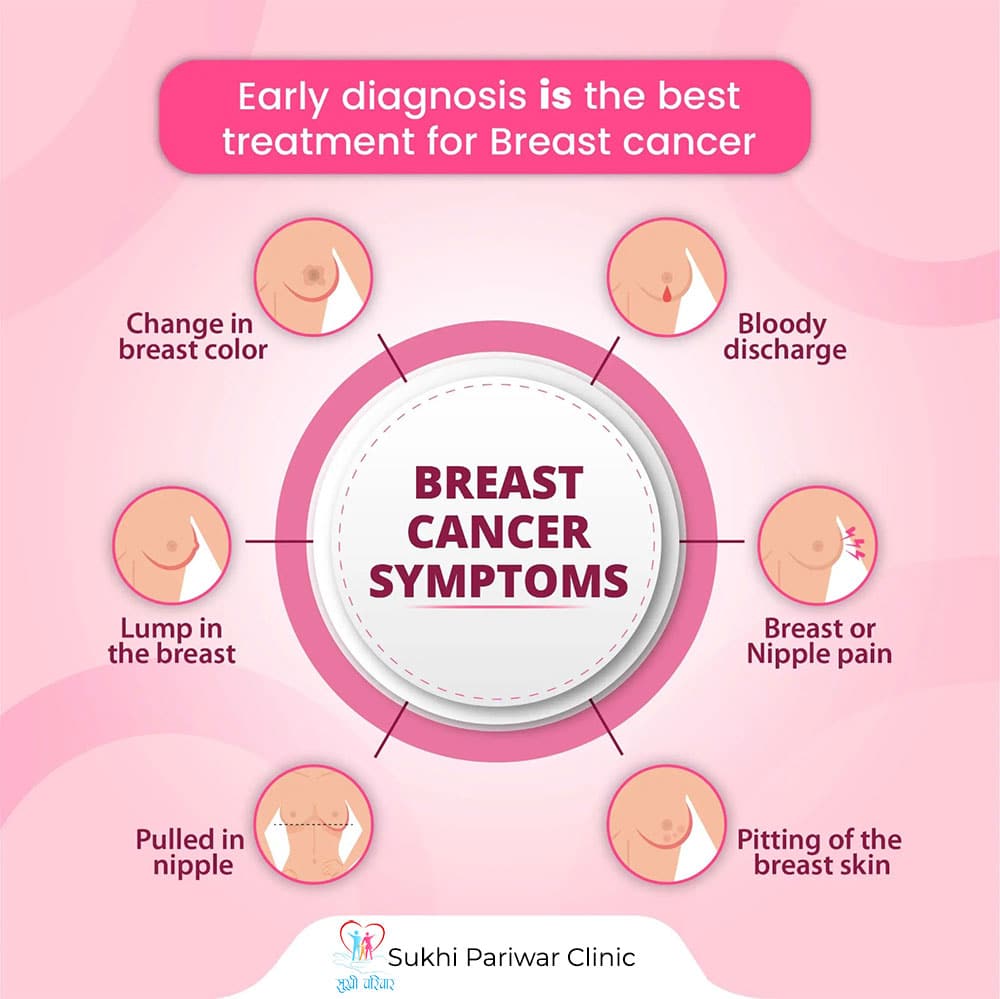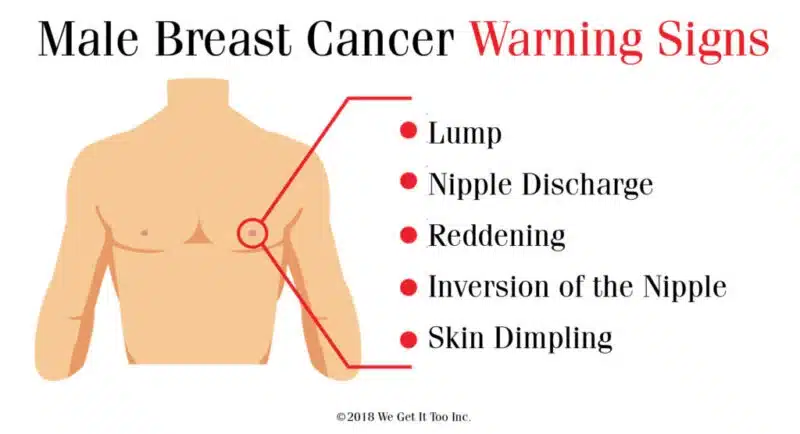Breast cancer can present itself in many different ways, and sometimes it shows no symptoms at all. For this reason, staying informed about the signs, conducting regular self-exams, and keeping up with screenings are vital steps in early detection. Let’s break down the symptoms, risk factors, and next steps to help you stay proactive about your breast health.
Common Symptoms of Breast Cancer

While the most recognizable symptom of breast cancer is a lump, there are several other changes to watch for. These include:
- Lump or mass: Often hard, irregular, and painless, but can also be soft or tender.
- Swelling: In part or all of the breast, even without a lump.
- Skin changes: Dimpling, redness, or thickening (may resemble an orange peel).
- Nipple changes: Pain, retraction (turning inward), or unusual discharge (not breast milk).
- Pain: Persistent breast or nipple pain without a clear explanation.
- Changes in breast size or shape.
- Lumps in the underarm area: Could indicate swollen lymph nodes.
Note: Many of these symptoms can also result from noncancerous conditions, such as cysts or infections. However, if you notice anything unusual, consult a doctor promptly.
Symptoms Based on Breast Cancer Types
- Ductal Carcinoma In Situ (DCIS):
- Typically asymptomatic.
- Occasionally, nipple discharge or a small lump may occur.
- Invasive Ductal Carcinoma (IDC):
- A lump or mass in the breast.
- Skin dimpling or changes in texture.
- Breast or nipple pain.
- Lobular Carcinoma In Situ (LCIS):
- Often symptomless and detected during biopsies for other reasons.
- Invasive Lobular Carcinoma (ILC):
- Thickening or fullness in a part of the breast.
- Skin texture changes or nipple inversion.
- Inflammatory Breast Cancer (IBC):
- Redness, swelling, or warmth in the breast.
- Skin may appear ridged or pitted, resembling an orange peel.
- Rapid onset of symptoms, often without a distinct lump.
- Triple-Negative Breast Cancer (TNBC):
- Symptoms similar to IDC or ILC.
- More aggressive and often affects younger women.
- Paget’s Disease of the Nipple:
- Red, scaly, or flaky skin on the nipple or areola.
- Burning or itching sensation.
- Often associated with underlying breast cancer.
- Metastatic Breast Cancer (Stage 4):
- Symptoms depend on where the cancer has spread:
- Bones: Pain or fractures.
- Liver: Jaundice, swelling, or fatigue.
- Lungs: Difficulty breathing or chest pain.
- Brain: Headaches, seizures, or vision problems.
- Symptoms depend on where the cancer has spread:
Breast Cancer in Men

Though rare, men can develop breast cancer. Symptoms in men include:
- A lump in the breast, usually painless.
- Nipple changes or discharge.
- Skin dimpling or puckering.
Benign Breast Conditions
Not all breast changes indicate cancer. Common noncancerous issues include:
- Cysts: Fluid-filled sacs that can be tender.
- Fibroadenomas: Solid, benign tumors that feel smooth and rubbery.
- Mastitis: An infection causing redness and swelling, often in breastfeeding women.
- Fat Necrosis: Firm lumps caused by injury or surgery.
Risk Factors for Breast Cancer
- Unchangeable Factors:
- Gender: Women are at higher risk, but men can also develop breast cancer.
- Age: Risk increases with age, especially after 50.
- Genetic Mutations: BRCA1 and BRCA2 mutations significantly raise risk.
- Family History: Having close relatives with breast or ovarian cancer.
- Dense Breast Tissue: Makes cancer harder to detect on mammograms.
- Lifestyle Factors:
- Alcohol consumption: Higher intake raises risk.
- Obesity: Particularly after menopause.
- Physical inactivity.
- Hormone Replacement Therapy (HRT): Long-term use can increase risk.
- Reproductive Factors:
- Having a first child after 30.
- Not breastfeeding.
- Never having a full-term pregnancy.
Early Detection: How to Stay Ahead
- Self-Exams:
- Conduct monthly self-checks to familiarize yourself with your breasts’ normal look and feel.
- Check for lumps, skin changes, or nipple discharge.
- Screenings:
- Annual mammograms starting at 40 (or earlier if you’re at high risk).
- Ask your doctor about 3D mammograms, which provide clearer images.
- Genetic Testing:
- If you have a family history of breast or ovarian cancer, consider testing for BRCA mutations.
- Be Proactive:
- Report any unusual changes to your doctor immediately.
- Attend regular clinical breast exams as recommended.
When to See a Doctor
You should consult a healthcare provider if you notice:
- New lumps in the breast or underarm.
- Persistent pain in any part of the breast.
- Skin changes, such as dimpling or redness.
- Unusual nipple discharge.
FAQs
Q1: Can breast cancer be painless?
Yes, many breast cancers are painless, especially in the early stages. A painless lump can still be a warning sign.
Q2: What does breast cancer feel like?
Cancerous lumps are often hard, irregular, and immovable, though they can also be soft and tender.
Q3: Does nipple discharge always mean cancer?
No, but discharge, especially bloody or clear, should be evaluated by a doctor.
Q4: Are breast lumps always cancerous?
No, most lumps are benign. However, it’s important to get them checked.
Q5: Can men get breast cancer?
Yes, though it’s rare. Men should report any breast lumps or changes to a doctor.
Key Takeaways
- Breast cancer symptoms vary but can include lumps, swelling, skin changes, or nipple discharge.
- Some types of breast cancer cause no symptoms in early stages, highlighting the importance of regular screenings.
- Benign breast conditions can mimic cancer, so professional evaluation is crucial.
- Knowing your risk factors and staying proactive with self-exams and mammograms can save lives.
Remember: Early detection is key. If you notice any unusual changes, don’t wait—schedule an appointment with your doctor.
References
- American Cancer Society
- Breast Cancer Symptoms and Signs: www.cancer.org
- Centers for Disease Control and Prevention (CDC)
- What Are the Symptoms of Breast Cancer? www.cdc.gov
- National Cancer Institute (NCI)
- Breast Cancer Information: www.cancer.gov
- Mayo Clinic
- Breast Cancer Symptoms and Causes: www.mayoclinic.org
- Breast Cancer Research Foundation (BCRF)
- Risk Factors for Breast Cancer: www.bcrf.org


